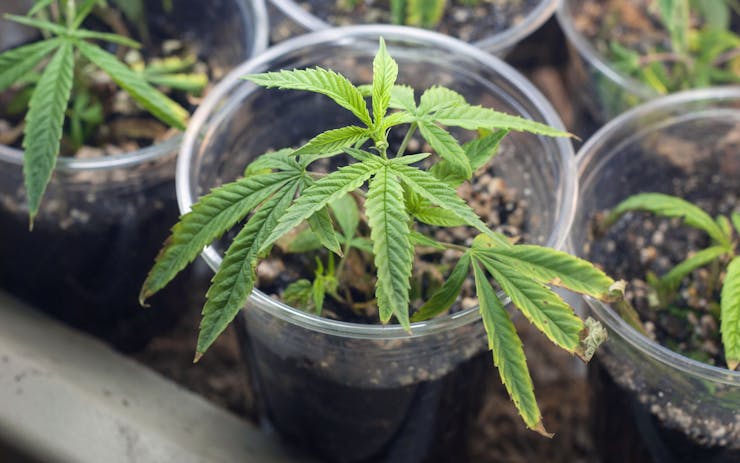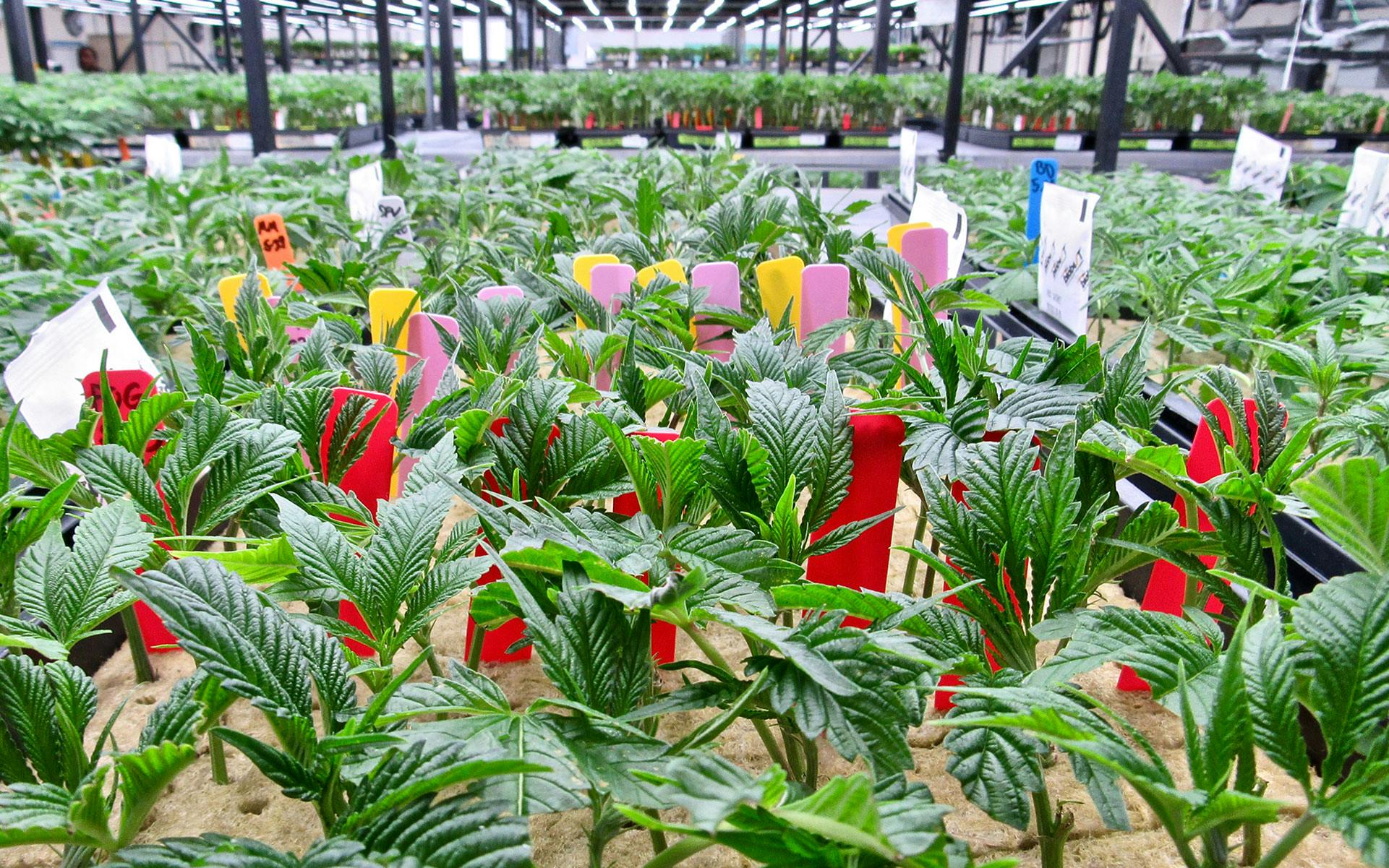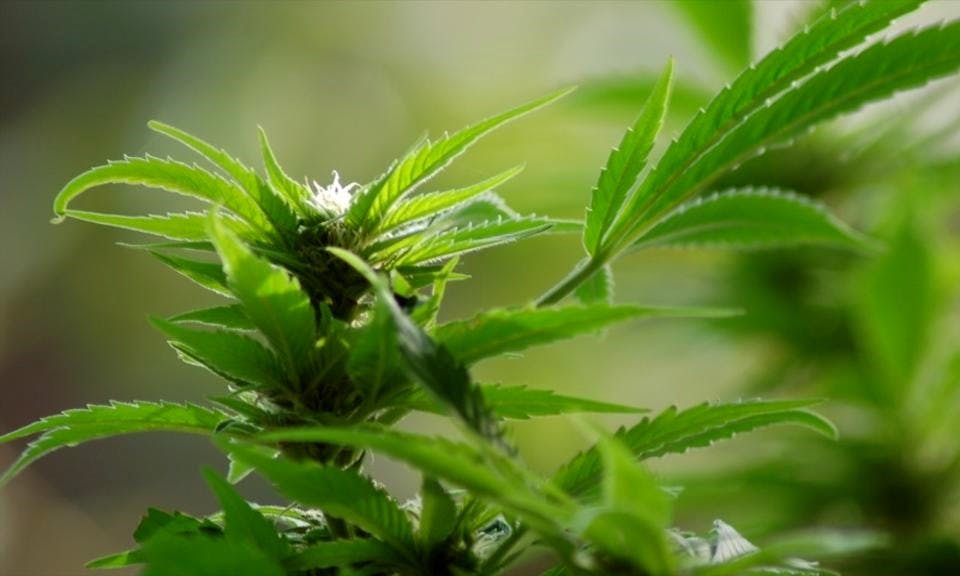If you’re a cannabis enthusiast or familiar with the basic principles of botany, you’ll know that cannabis plants come from two sources: seeds and clones. One of the enduring debates among cannabis growers is the merits of growing from seeds versus cultivating from clones.
Seeds are created by sexual propagation and contain genes from both parents, rendering the seed—and the plant the seed grows into—genetically unique.
Cannabis clones are cuttings taken from a healthy female—called a mother plant—that has been grown from seed or is itself a clone. So cuttings can be taken from clones, or clones of clones, ad infinitum.
After a cutting of a growing branch is taken, it’s ideally dipped in a hormone medium and then roots out. Through this form of asexual reproduction, identical cannabis plants can be grown abundantly and for free for successive generations. Or can they?
Cannabis cloning represents an incontestably straightforward way of getting identical cannabis. What’s more, it’s currently the most dominant method of cultivating cannabis. In a commercial context where consumers demand consistency, it’s a gift.
However, there are murmurs among seasoned growers that clones lose potency over time. Some think it’s the phenomenon of clonal degradation: the notion that cannabis clones drift away from the mother plant’s genes over subsequent generations, resulting in weaker plants that yield less and become more susceptible to pests and fungi.
Clonal degradation: What causes it?
Clonal degradation, or genetic drift as it is sometimes called (though this term is debatable), is fiercely contested in the world of weed: some maintain it is a myth, while others insist it’s a real phenomenon. Cannabis chat rooms are saturated with arguments over how clonal decay occurs, with some blaming mutation in clones, while others point to cellular degradation when they become “cloned out.”
Let’s unpack genetic drift by briefly revisiting some of the basics of high school bio.
Cloned cuttings can’t change their genetic imprint because a clone is an exact genetic replica of the mother plant. A clone is even the same cellular age as the mother plant—a one-week-old clone taken from a two-month-old mother is actually two months old.
Genetic variation comes from sexual reproduction, i.e., with seeds. While genetic mutations can occur as a result of growth, it doesn’t mean that the gene pool of cannabis clones dramatically changes from generation to generation.
But the same clones subjected to different environments often look and grow differently. An under-fertilized clone in a low-humidity environment will grow with less vigor than its sister receiving perfect fertilization and humidity in a grow room across town. Environment plays a critical role in the growth and health of a cannabis clone.
Let’s talk epigenetics and the environment
The field of epigenetics offers valuable insights for understanding how cannabis clones can appear to lose potency. Epigenetics refers to outside stimuli, or modifications, that can turn genes on or off. It’s not that there is an alteration of the genetic code in the clone; rather, environmental factors modify its genetic potential and expression.
“Epigenetic impacts on clone health over time are very significant. Without proper mineral nutrition and biological health, the vigor of a clone will diminish over time as it continually is replicated, thus reducing its viability,” said Russell Pace III, President of the Cannabis Horticultural Association.
Genes load the gun, but the environment pulls the trigger.
Epigenetics provides us with a more nuanced understanding of the nature versus nurture paradox. Genes load the gun, as the saying goes, but the environment pulls the trigger.
So now that we know successive generations of cannabis clones aren’t genetically inferior in some way, what are some of the environmental factors or stressors that affect the growth of clones?
Environmental stressors that affect clones
Environmental elements that are essential to optimizing clone potency include the maintenance of appropriate levels of light, humidity, soil nutrients, and water. Stressors that should be avoided include over or underwatering, over or underfeeding, incorrect soil pH, and inconsistency with light cycles during the vegetative and flowering cycles. Pesticides can be another stressor that can damage plants when misapplied or applied overzealously.
Taproots: they’re important
Another inevitable contributor to clonal decay that isn’t environmental may be the lack of a taproot. Cannabis grown from seed has a taproot—a central root which is sent deep into the soil from which subsidiary roots grow.
When a cutting is taken from a cannabis plant, the cutting must develop a tangle of roots to funnel up moisture and nutrients. Clones lack a taproot and therefore are structurally (not genetically) distinct to cannabis grown from seed.
“The lack of a taproot definitely affects the vigor of a cloned plant when compared to the growth rate of a seed plant,” said Pace. “A seed plant will be infinitely more robust and have faster growth rates in most cases.”
Cleanliness is critical to clone success
The mere act of taking a cutting from the mother plant also introduces a host of potential problems. Aside from inflicting transplant shock on the clone, the cut part creates an easy passage for pathogens such as bacteria, viruses, and fungi to weave their way in, causing infection.
“Basically, a clone infected with a virus is like a dud where it grows slow and really doesn’t produce very well,” said Pace.
Shop highly rated dispensaries near you
Showing you dispensaries nearGrowers who scrupulously sterilize cloning equipment and use proper techniques will have greater success cloning without issue. When every care is taken to ensure that the cutting is taken as gently as possible, and appropriate rooting and hormone mediums are used, the clone is more likely to extend a robust rooting system and grow strong and healthy.
Genetic mutations can occur in clones
That said, however, cannabis horticulturist Jorge Cervantes points out that genetic mutations can and do occur in clone populations as they grow and can be passed on through cuttings. While peer-reviewed studies exploring the intricacies of cannabis botany are still few and far between, there is research to suggest that phenotypic variation—that’s variation in physical characteristics—in plant cuttings is due to sporadic mutations in the DNA sequences.
A theory known as Muller’s ratchet argues that clone populations are doomed to accumulate increasing numbers of harmful mutations, which inhibit the plant’s ability to grow and thrive. Some interpret it as nature’s way of showing a preference for sexual reproduction in plant populations.
What’s more, telomeres may also play a role in clonal decay. Telomeres are protective caps at the ends of chromosomes that ensure DNA is copied accurately when it divides. When telomeres are stressed or damaged, the very end of the DNA strand doesn’t make it into the new copy, which results in a loss of vital genetic information.
It can be helpful to conceptualize this process like a photocopier cutting off the last line of text from a page each time it is copied—analogously, DNA strands may become shorter with every cell division.
The result is that plants lose their competence to undergo normal cell division, and healthy growth becomes decelerated or arrested. While we still don’t know a lot about how telomeres work in cloned plants, or more specifically in cloned cannabis plants, we do know that telomere shortening can be exacerbated by environmental stressors and physiological processes such as aging.
And it’s important to only clone from mother plants in a vegetative state as this study shows that age may play a role in clonal genetic mutations. Older mothers that have already been through flowering cycles are not an optimal source for cuttings because the stress of these processes compromises their genetic integrity.
How to optimize conditions for your clones
Ultimately, there is a host of factors that may contribute to clonal decay. While the control of some elements is out of our hands, clonal degradation can be somewhat avoided with proper care, technique, and management of clones. Take clones from robust young mothers using sterile equipment, provide them with the best possible environment, and there’s no reason they won’t thrive for generations.
What’s most promising, according to Pace, is that even damaged or weak clones can be nursed back to health with the right growing conditions such as healthy soil.
“I think this is a most promising type of immunotherapy, so to speak,” says Pace. “Healthy soil biology can act as epigenetic gene therapy for plants. The grower attempts to create optimal environments loaded with beneficial biology and a well balanced soil chemistry.”
This epigenetic gene therapy, of sorts, can boost the innate immune systems of clones. “It essentially allows them to express their highest level of epigenetic potential. It’s really fascinating and something I’ve witnessed first-hand,” said Pace.







